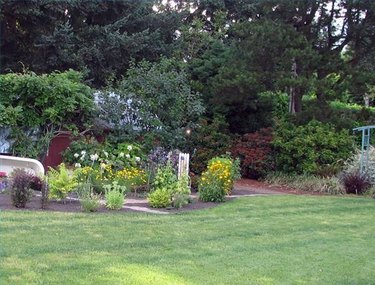
Centipede lawns grow well in warm climates and are popular in southern Georgia. As with many grasses, centipede lawns can be invaded by the troublesome crabgrass, which is a prolific weed. With the ideal conditions, crabgrass seeds can continue to germinate during the growing season. Each plant will grow to about a foot in diameter and when it dies it leaves a dirt patch. The following season the seeds it left behind can repopulate the centipede lawn with a new growth of crabgrass.
Step 1
Kill the crabgrass' chance of growing. Keep the centipede lawn healthy. Crabgrass will have a difficult time growing in a healthy lawn. To keep the centipede lawn healthy, never mow it when the grass or soil is wet. Keep the mower blades sharp. Avoid early spring or late fall fertilization. And, do not use too much nitrogen on the centipede lawn.
Video of the Day
Step 2
Kill the crabgrass and its seeds. Begin treating the centipede lawn with pre-emergence herbicides in the second year. Apply the treatment when the forsythia are in bloom. Do this annually, following the instructions on the pre-emergence herbicides you purchase. Centipede grass is sensitive to some types of herbicides (such as 2,4-D). It is important to read the label before purchasing.
Step 3
Kill the crabgrass seed's chance of germination. Pay attention to the mowing heights. If the lawn is mowed too short, it will help the crabgrass grow, as the seeds need sunlight to germinate. Yet, if you mow the centipede lawns at a height of 2 inches or more, it can be detrimental to the health of the centipede lawn.
Video of the Day